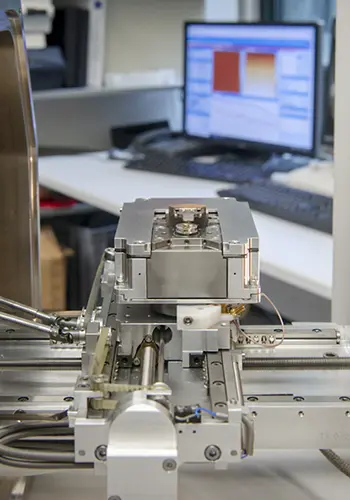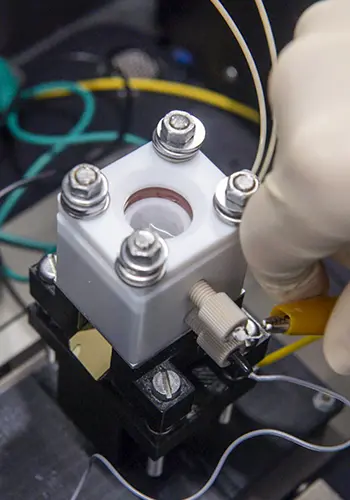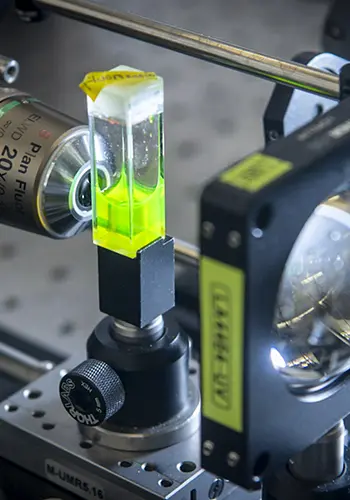HIGH COMPETENCE
In One Central Research Location
Why is Munich the Ideal Place for a New Battery Research Center?
The SolBat Center aims to create a globally unique experimental infrastructure covering the entire value chain, from exploring optoionics and material synthesis to designing devices and developing solar battery prototypes. Located on the research campus in Garching near Munich, it benefits from bundled expertise in material synthesis, photovoltaics, optics, electrochemistry, and energy systems research.
The campus ecosystem includes state-of-the-art facilities like the TUM Catalysis Center, the TUM Electron Microscopy Center, and two leading supercomputing centers: the Leibniz Supercomputing Center and the Max Planck Computing and Data Facility. TUMIntEnergy supports applied battery research and technology transfer, directly connecting with industry partners. Additionally, expertise from the SolTech consortium in hybrid solar technologies enhances the SolBat initiative.
The e-conversion Cluster

The DFG-funded Cluster of Excellence e-conversion plays a particular incubating role, with all three SolBat lead scientists maintaining executive roles in the cluster. The e-conversion research agenda comprises the fundamental development of innovative (hybrid) energy conversion concepts. Complementary to this horizontal approach, the SolBat center now realizes the full translation of one of these concepts up to first solar battery prototypes.

First Class Instrumentation
The interdisciplinary orientation of the SolBat Center at the interface between solar energy conversion and electrochemical energy storage requires a special and globally unique infrastructure that synergistically combines methods of optoelectronics and electrochemistry and that establishes novel instruments and methods for optoionics. These include particular experimental setups for the construction of solar batteries and other optoionic devices, such as sensors and memristors, under inert conditions or open geometries. The focus is on the innovative integration of optical, optoionic/electronic, and electrochemical components, which requires dedicated and partly newly developed chemical, optical, optoelectronic, and electrochemical analytics.




A key focus is on the establishment of a so-called self-driving AI laboratory (SDL) for the processing and stabilization of solar batteries with different designs. This SDL combines elements of high-throughput synthesis and analytics with AI and machine learning. The goal is to accelerate testing, development, and optimization through tight feedback loops, with AIs taking over the experiment planning and data analysis. To develop fundamental questions such as solar battery design as flexibly and open-endedly as possible, the SDL includes maximally modular glovebox lines with an integrated, automated synthesis and analytics infrastructure, generating a one of its kind facility.
Backed by the Max Planck Foundation

The work at the actual Munich SolBat facility is complemented by extensive fundamental research on optoionics, generously funded by the Max Planck foundation. This research takes place at the Stuttgart MPI for Solid State Research and the Berlin Fritz-Haber-Institut of the MPG, and adds cutting edge computational modeling, as well as further synthesis and analytical capabilities to the SolBat portfolio.